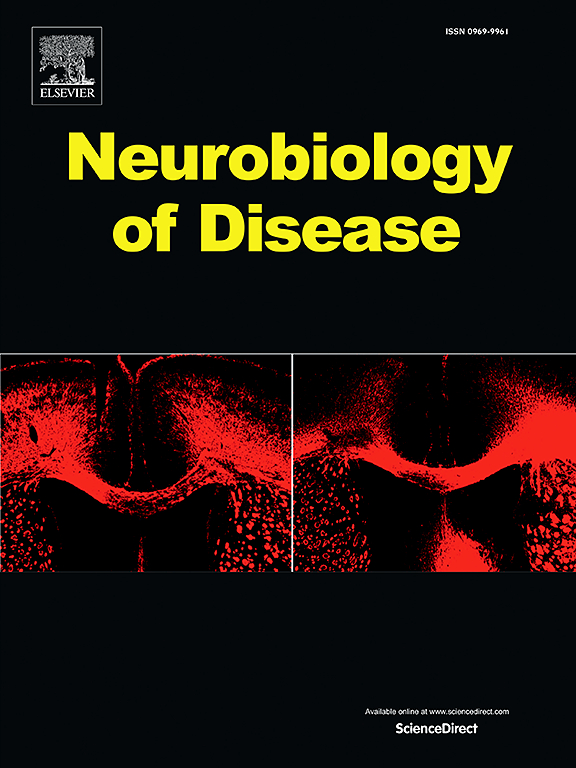Double-edged sword effect of Sutterella in neurological disorders: implications for the gut-brain axis and neuroimmune interactions
IF 5.6
2区 医学
Q1 NEUROSCIENCES
引用次数: 0
Abstract
The genus Sutterella, a group of bile-resistant microaerophilic gram-negative bacteria, has emerged as a key player in gut-brain axis communication, with significant yet complex implications for neurological and psychiatric disorders. This study synthesizes current evidence on Sutterella's dual role in modulating immune responses and neuroinflammation, highlighting its context-dependent effects across Alzheimer’s disease (AD), Parkinson’s disease (PD), Huntington's disease (HD), autism spectrum disorder (ASD), attention-deficit/hyperactivity disorder (ADHD), multiple sclerosis (MS), migraine, epilepsy, autoimmune encephalomyelitis (AE), and depression. While Sutterella exhibits pro-inflammatory properties, such as inducing cytokines (e.g., IL-6 and TNF-α) and degrading immunoglobulin A (IgA), it also demonstrates immunomodulatory potential, including anti-inflammatory IL-10 induction. Recent studies underscore Sutterella’s direct and indirect involvement in neuropathological processes through its influence on systemic inflammation, barrier permeability, tryptophan metabolism, and glial activation. In AD and PD, its abundance correlates with disease severity and key molecular markers such as amyloid burden and oxidative stress. In ASD and depression, Sutterella has been linked to neuroinflammatory cascades and behavioral dysregulation, potentially mediated through lipopolysaccharide (LPS)-associated immune activation. Furthermore, the presence of Sutterella has shown predictive utility in migraine and schizophrenia cohorts, reinforcing its relevance as both a potential biomarker and therapeutic target. This review underscores the need for standardized methodologies, mechanistic studies, and longitudinal cohorts to clarify Sutterella's causal contributions. By integrating preclinical and clinical data, we propose Sutterella as a potential biomarker and therapeutic target, emphasizing the importance of personalized approaches in microbiota-based interventions for neurological and psychiatric disorders.

萨特菌在神经系统疾病中的双刃剑效应:对肠-脑轴和神经免疫相互作用的影响
Sutterella属是一组耐胆汁的嗜气微革兰氏阴性细菌,已成为肠-脑轴通讯的关键角色,对神经和精神疾病具有重要而复杂的影响。本研究综合了目前关于Sutterella在调节免疫反应和神经炎症中的双重作用的证据,强调了其在阿尔茨海默病(AD)、帕金森病(PD)、亨廷顿病(HD)、自闭症谱系障碍(ASD)、注意力缺陷/多动障碍(ADHD)、多发性硬化症(MS)、偏头痛、癫痫、自身免疫性脑脊髓炎(AE)和抑郁症中的情境依赖性作用。虽然Sutterella具有促炎特性,如诱导细胞因子(如IL-6和TNF-α)和降解免疫球蛋白A (IgA),但它也具有免疫调节潜能,包括抗炎诱导IL-10。最近的研究强调,通过影响全身炎症、屏障通透性、色氨酸代谢和神经胶质活化,Sutterella直接或间接参与神经病理过程。在AD和PD中,其丰度与疾病严重程度和淀粉样蛋白负担和氧化应激等关键分子标志物相关。在ASD和抑郁症中,Sutterella与神经炎症级联反应和行为失调有关,可能通过脂多糖(LPS)相关的免疫激活介导。此外,Sutterella的存在在偏头痛和精神分裂症人群中显示出预测效用,加强了其作为潜在生物标志物和治疗靶点的相关性。这篇综述强调需要标准化的方法、机制研究和纵向队列来澄清Sutterella的因果贡献。通过整合临床前和临床数据,我们提出Sutterella作为潜在的生物标志物和治疗靶点,强调个性化方法在基于微生物群的神经和精神疾病干预中的重要性。
本文章由计算机程序翻译,如有差异,请以英文原文为准。
求助全文
约1分钟内获得全文
求助全文
来源期刊

Neurobiology of Disease
医学-神经科学
CiteScore
11.20
自引率
3.30%
发文量
270
审稿时长
76 days
期刊介绍:
Neurobiology of Disease is a major international journal at the interface between basic and clinical neuroscience. The journal provides a forum for the publication of top quality research papers on: molecular and cellular definitions of disease mechanisms, the neural systems and underpinning behavioral disorders, the genetics of inherited neurological and psychiatric diseases, nervous system aging, and findings relevant to the development of new therapies.
 求助内容:
求助内容: 应助结果提醒方式:
应助结果提醒方式:


